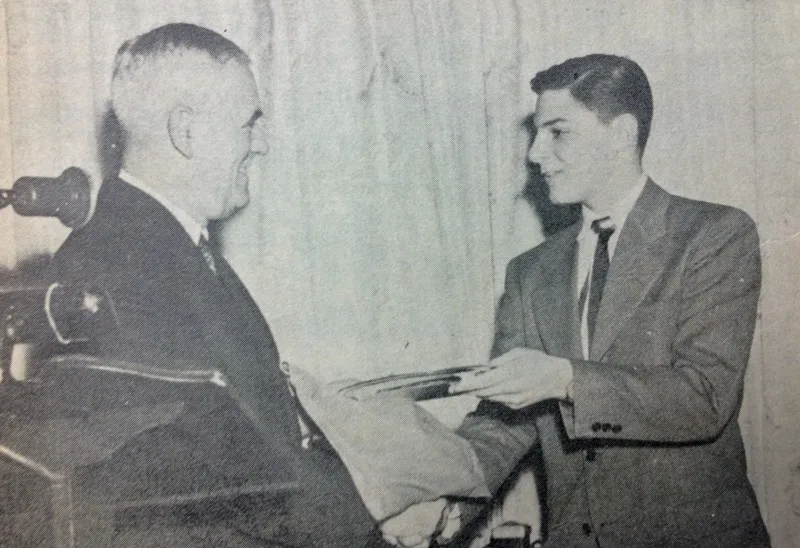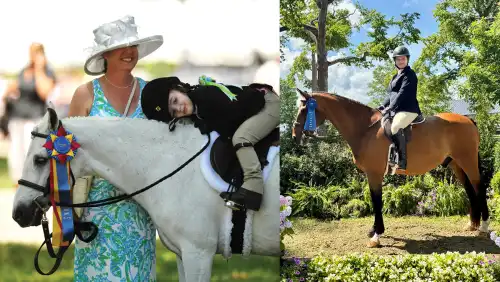The U.S. Equestrian Federation Annual Meeting, which is currently taking place in West Palm Beach, Florida, is an annual tradition dating back to 1917, when a group of horse show representatives first came together to form an organization to maintain clean competition and a level playing field.
We dug back in our archives to take a look at our coverage of previous meetings, when the federation was known as the American Horse Shows Association.
Held at New York’s Waldorf-Astoria Hotel in early January, the 1949 meeting had a record 335 people in attendance for the annual luncheon, about 80 of whom were “post entries.” Four people attended from California, which was the first time anyone from the West Coast came.
The previous year had seen a “disturbing” financial loss, but the organization made a profit in 1949 of $100. A recommendation was made to the board of governors to raise senior membership from $5 to $10 and junior membership from $2 to $3 to help offset losses.
An eternal debate, conflicting horse show dates, was another hot topic at the meeting.
“[AHSA President Adrian Van Sinderen] mentioned two shows which had been a sore point last year,” the report said. “A minute check showed that neither show had been particularly hurt because of the conflict, and once again he reminded everyone that there aren’t enough week-ends to go around and that some of the show dates will have to overlap.”
Van Sinderen also brought up that in 1937, the AHSA Rulebook was 28 pages, while the newest edition was 236 pages. (The 2019 edition of the USEF Rulebook is 1209 pages.)
ADVERTISEMENT

Frank Chapot took home a silver plate as the winner of the working hunter high score award with Chado in 1949. Carl Klein Photo
The 1979 meeting was once again held in New York City, and many changes made at that meeting continue to affect the show climate today.
“It is proposed that the age of a rider be dated from December 1st instead of Jan. 1st as in the past,” the report read. “This seems logical since it would coincide with the beginning of the horse show year which is also Dec. 1. Judy [Richter] explained that in the past the month of December had been rather in limbo for juniors. Making both dates Dec. 1st would be more consistent. This was almost unanimously approved.”

Cartoons were a regular part of the Chronicle, and in 1979 this one ran in the ASHA Convention coverage.
Judges were given more power to determine soundness when the hunter forums voted for a rule that stated, “The decision of a judge as to the serviceable soundness of a horse in hunter classes is final. A veterinarian cannot be called to decide the soundness of a horse in hunter classes.”
The proposed rule that, “Entry fees may not exceed 10% of the prize money offered” was strongly opposed. One delegate brought a list of 50 shows that wished to go on record as being against it. It was later voted that the rule be deleted.
Twenty years later, in 1999, great strides were made in terms of horse welfare.
“A year of education, research and substantial last-minute compromise has accomplished what seemed impossible at the 1999 American Horse Shows Association convention,” read John Strassburger’s report. “But on Jan. 5-10 in St. Louis, Mo., the AHSA Board of Directors passed a rule limiting five kinds of non-steroidal anti-inflammatory drugs [phenylbutazone, flunixin, ketoprofen, meclofenamic acid and naproxen] effective April 1.
“And it happened with no substantive objections at the drugs and medications form on Thursday and nothing but congratulations at the board meeting in Sunday,” Strassburger continued.
ADVERTISEMENT
“A year ago, said Larry Langer, chairman of the National Hunter/Jumper Council, ‘They were trying to make hunter/jumper people look like horse abusers, and the reality was nobody was trying to hurt their horses. This year, cooler heads prevailed to help the horse and keep the sport going.’
“Said Ned Bonnie, chairman of the Drugs and Medications Committee, ‘The year was well-spent. We had to take time to educate ourselves and our experts to come to a consensus. Fortunately, this meeting didn’t split apart the AHSA, it brought us together.’ ”
The other big rumbling came as a result of the increment system, which is still one of the metrics used to determine horse of the year awards. While the controversial rule change was tabled, the National Hunter Jumper Committee did approve a rule changing the rating system for horse shows, “substantially decreasing the number of points horses can earn.”

Gerald Camera won the AHSA’s amateur-owner hunter, 36 and over, title with IslandTime. He’s still competing in the amateur-owners 20 years later. John Strassburger Photo
“The Hunter Committee established the increment system in 1985 as a means to weigh points hunters earn to qualify for certain shows and for the AHSA’s horse of the year awards,” read the report. “Its fundamental tenet is that all A-rated shows are not equal, and it gives points based on prize money and number of competitors.
“Consequently, opponents, led by Dolores Swann, manager of A-rated shows at Ashley Meadows Farm (Pa.), maintain that this point system has ruined that hunter world, creating a class structure by forcing people to go to big shows. Opponents consider the system a vicious cycle—prize money brings entries, who then get more points, and the only way to qualify for the indoor shows and get year-end awards is to go to the five-day expensive shows, so those shows get more entries.
“Despite widespread agreement that the system is full of holes after more than a decade of tinkering, no one has forced any substantive changes to be made. Langer suggested at the board meeting and after the convention that the Hunter Committee might not be the right group to solve the problem.
“ ‘The Hunter Committee is predominantly the people at the top of the sport, and they are not necessarily sensitive to the issues facing the entire sport,’ said Langer.”















